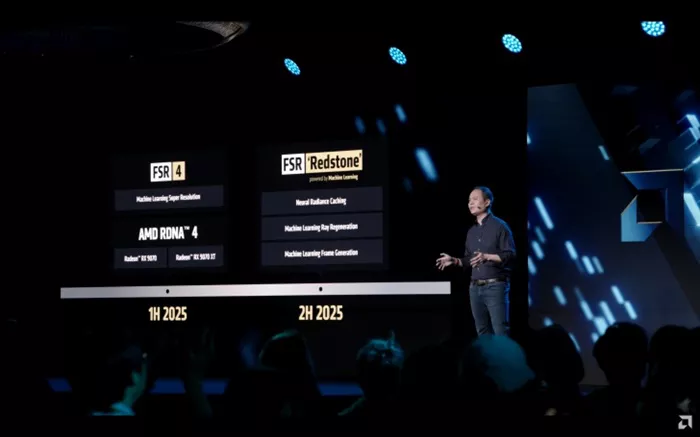AMD has announced a major update to its FidelityFX Super Resolution (FSR) technology, called FSR Redstone. This new version will bring several new features, including Neural Radiance Cache, Ray Regeneration, and machine learning-assisted frame generation.
FSR 4 has had a successful year, with nearly 60 games adding support since its launch. While AMD continues to expand the FSR ecosystem with regular SDK updates, the company has been quietly developing this significant update.
At Computex 2025, AMD revealed details about FSR Redstone. The update is expected to roll out in the second half of 2025 and aims to improve both performance and visual quality for supported games.
The first major feature in FSR Redstone is the Neural Radiance Cache (NRC). This technology predicts and stores indirect lighting by analyzing how light bounces within a scene. It works similarly to NVIDIA’s Neural Radiance Cache, which was recently updated for use in Portal RTX.
The second new addition is Ray Regeneration. This feature directly competes with NVIDIA’s DLSS Ray Reconstruction technology. Ray Regeneration uses a trained neural network to regenerate pixels that cannot be accurately rendered by traditional path tracing. It also filters out noisy grain in real time using machine learning, potentially boosting performance by replacing in-game denoisers.
Finally, AMD is improving its Super Resolution upscaling technology with an enhanced machine learning model. This update also introduces AI-assisted frame generation, which helps to raise visual fidelity even further.
Like FSR 4, FSR Redstone will initially support only AMD’s latest RDNA 4 GPUs. However, AMD may extend some features to older RDNA architectures in future updates.
AMD has promised to share more information about FSR Redstone in the coming months, and many are eager to see how these advancements will impact gaming visuals and performance.

